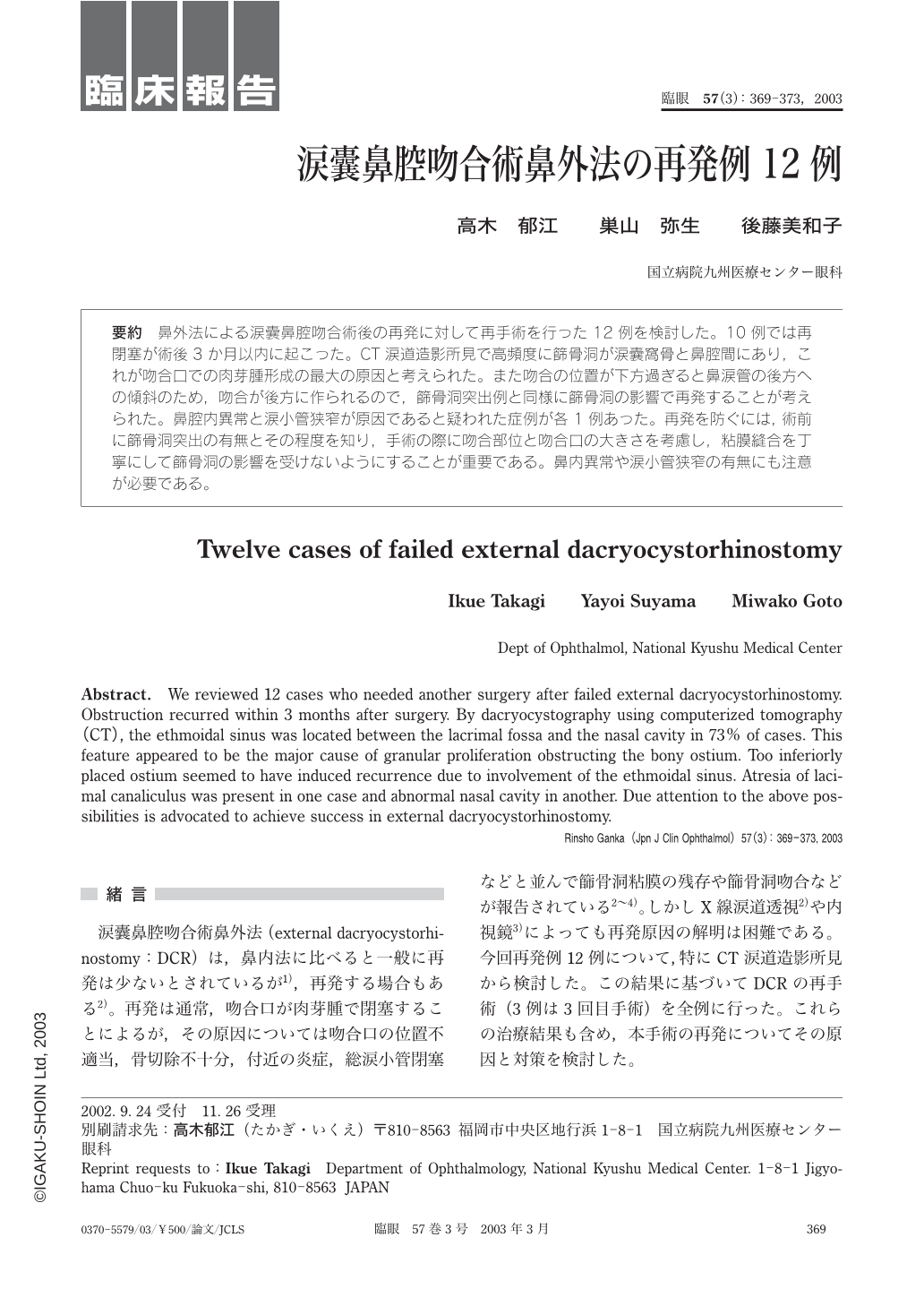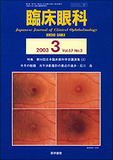Japanese
English
- 有料閲覧
- Abstract 文献概要
- 1ページ目 Look Inside
要約 鼻外法による涙囊鼻腔吻合術後の再発に対して再手術を行った12例を検討した。10例では再閉塞が術後3か月以内に起こった。CT涙道造影所見で高頻度に篩骨洞が涙囊窩骨と鼻腔間にあり,これが吻合口での肉芽腫形成の最大の原因と考えられた。また吻合の位置が下方過ぎると鼻涙管の後方への傾斜のため,吻合が後方に作られるので,篩骨洞突出例と同様に篩骨洞の影響で再発することが考えられた。鼻腔内異常と涙小管狭窄が原因であると疑われた症例が各1例あった。再発を防ぐには,術前に篩骨洞突出の有無とその程度を知り,手術の際に吻合部位と吻合口の大きさを考慮し,粘膜縫合を丁寧にして篩骨洞の影響を受けないようにすることが重要である。鼻内異常や涙小管狭窄の有無にも注意が必要である。
Abstract. We reviewed 12 cases who needed another surgery after failed external dacryocystorhinostomy. Obstruction recurred within 3 months after surgery. By dacryocystography using computerized tomography(CT),the ethmoidal sinus was located between the lacrimal fossa and the nasal cavity in 73% of cases. This feature appeared to be the major cause of granular proliferation obstructing the bony ostium. Too inferiorly placed ostium seemed to have induced recurrence due to involvement of the ethmoidal sinus. Atresia of lacimal canaliculus was present in one case and abnormal nasal cavity in another. Due attention to the above possibilities is advocated to achieve success in external dacryocystorhinostomy.

Copyright © 2003, Igaku-Shoin Ltd. All rights reserved.


